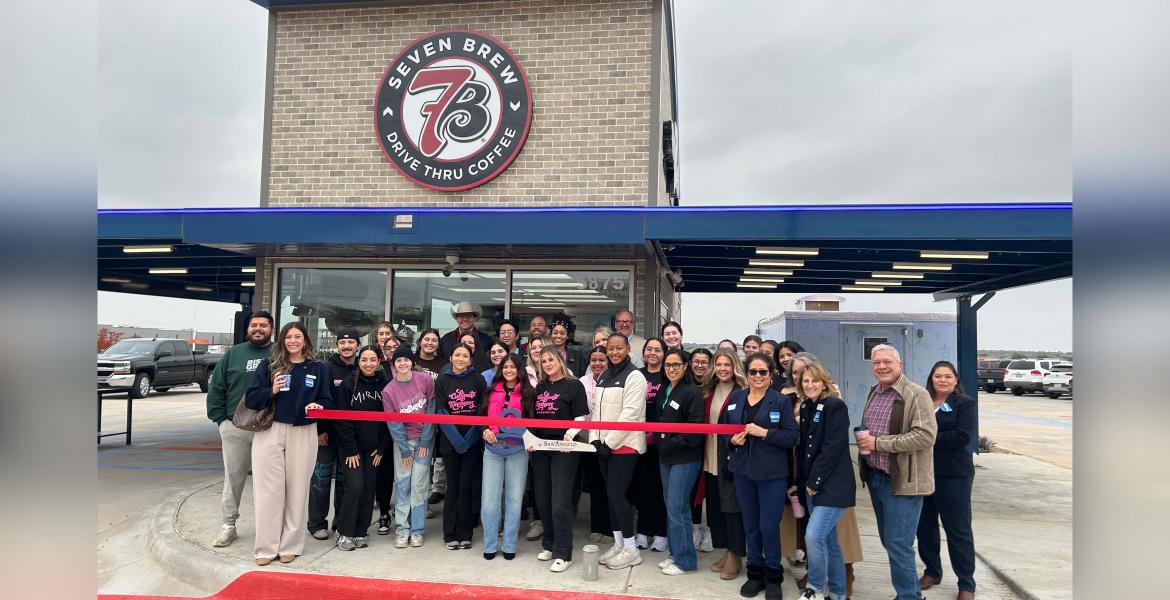The City of San Angelo’s Water Utilities Department will temporarily change the method of disinfection used in its public water supply, beginning June 1.
The Water Department normally uses chloramine, a mixture of ammonia and chlorine, to disinfect water. Beginning Monday, June 1, and through June 30, the Water Department will use chlorine only, also known as “free chlorine.” The periodic, temporary conversion from chloramines to free chlorine – a normal procedure for municipal water systems – ensures water safety in distribution lines by ridding the mains of accumulated biological growths, thus yielding the highest quality of drinking water.
Citizens may see more flushing of fire hydrants by City staff during this process. Certain water lines with low flow must be flushed more often to ensure the free chlorinated water is adequately moving through the system. The Water Department does not like doing this during the City’s water conservation program, but in some areas it will be necessary.
Free chlorine is a stronger disinfectant than chloramine. As a result, water users may experience a slight change in the aesthetics of their water during the conversion, including a noticeable “chlorine odor” and slight discoloration. Most symptoms should lessen after a couple of weeks and do not affect the safety of the water supply.
The Water Utilities Department encourages kidney dialysis patients to speak with their equipment supplier; different types of equipment may have varying needs and require adjustments. The city has contacted local hospitals to alert them of the change.
The processes most aquariums have for removing chloramines from water should do the same with free chlorine and need no adjustments. Even so, fish tank operators are encouraged to confirm that with their equipment supplier. Local pet stores have also been informed of the conversion.
The Water Department will monitor chlorine levels and water-quality standards in the distribution system on a daily basis to ensure the safety of the water and that all state and regulatory standards are met.
Frequently Asked Questions
Why is our water system making these changes to our disinfection process? Our water system normally uses ammonia and chlorine as the primary means of disinfection. The combination of these two chemicals form chloramine, the most common form of disinfection used in the United States for water systems utilizing lakes and rivers as their source. Occasionally, these systems must revert back to free chlorine as their disinfectant for a brief period of time for proper maintenance of the distribution system. Free chlorine works much better than chloramine in controlling thin biofilms of organics and microbes that can build up in a distribution system over time. This is a common preventive maintenance practice used by most water systems that use chloramine as the primary disinfectant.
When will this start and how long will it last? The conversion will start June 2 and last approximately four weeks.
Will I need to do anything differently during this change? No action is necessary. Residents may drink and use their water as normal.
What changes to the water quality will I notice during this period? When initially converting to free chlorine, you may notice more of a chlorine taste and odor to your water, especially in showers and sinks, where water splashes. There may also be slight discoloration in the water in areas of the city with low flows in the distribution pipes. These symptoms should lessen after the first couple of weeks of the change, but may still be present (although less noticeable) during the four-week period.
I have a fish tank. How will it affect my fish? We recommend you check with your equipment supplier. The processes you have in place to remove chloramines in the water should also remove free chlorine. No change or adjustment should be needed.
I’ve heard this can affect kidney dialysis machines. Is this true? We recommend you check with your equipment supplier as different equipment may have different needs or adjustments.
Will the City do anything to lessen the taste and odors we might experience during this change? Yes, the City will implement procedures to reduce effects as much as possible. However, changes are likely to occur and may persist. City staff will be monitoring the free chlorine residuals at various locations throughout the distribution system each day to ensure they are at correct levels. You may also see more flushing of fire hydrants by City staff during this process. Certain water lines with low flow must be flushed more often to ensure the free chlorinated water is adequately moving through the system. The Water Utilities Department does not like doing this during our water conservation program, but in some areas it will be necessary.
Is there a possibility of the free chlorine bleaching my clothes? Free chlorine is a much stronger disinfectant than chloramine. So, even though it may have more of a chlorine odor, the disinfectant residuals in the system will actually be lower than they currently are. We don’t expect to see any problems with bleaching of clothes. However, if you have brand-new clothes that have never been washed, you might wash them first in cold water to let their colors “set” before using a hot water wash.
Will this process improve the quality of my water once it is completed in four weeks? Typically after a change to free chlorine and then back to chloramine, less disinfectant is needed to maintain residuals in the distribution system. So if you are sensitive to the taste and smell of chloramine, you should see an improvement in water quality after the conversion.
Is there a way to reduce or remove the chlorine taste and odor during this period? Yes. A carbon filter is effective at removing free chlorine taste and odor, as well as chloramines. If you have an existing carbon filter on your faucet, reverse-osmosis (RO) system or cartridge under the sink, these should remove any additional taste and odor during this period. These are available at local retail stores. Some are inexpensive and easy to install.
Does the taste and odor from chlorine affect everyone the same? No. The taste and odor of chlorine in drinking water does not affect some people at all. Others who have a higher sensitivity to smells could be affected. Free chlorine tends to give water a “swimming pool” smell.
Whom can I contact with additional questions or concerns? Please call the Water Utilities Department at 325-657-4300 for more information.
Subscribe to the LIVE! Daily
Required






Comments
Listed By: Knuckles Malone
Why not use tank trucks to capture the water flushed from the fire hydrants during the disinfection process and use the water for parks, ball fields or return it to the lakes, instead of letting it run down the streets and not getting any use out of it?
- Log in or register to post comments
PermalinkListed By: Doctor Ding-bat
Y'all couldn't have picked a "Clean" sink for this photo ? ..... LOL
- Log in or register to post comments
PermalinkListed By: lazy texan
I agree with Knuckles. Why is this water going down the drain in a city that is known for it's horrendous droughts!? I've seen them time after time doing this procedure, filling all of downtown with water. I couldn't begin to guess how many gallons of water this might be. I (sort of) understand the need to do the procedure, but at least make the best of it! I might just make some phone calls this afternoon. I urge anyone else that agrees, to do the same.
- Log in or register to post comments
PermalinkListed By: Forrest Gump
It just makes sense. I like the water truck idea. We got lucky last night with some heavy rain but that is a rare event. We need to conserve like we might not see any more rain for a long time which is our usual pattern.
- Log in or register to post comments
PermalinkListed By: Jim JustJim
Oh no!! All you Jade Helm nutjobs get in here! Our local government is undergoing an annual procedure to pacify us free thinkers by dumping brain washing chemicals into our water supply! It's true I read it on the internets!
Sorry. Couldn't resist. Moving on.
Knuckles, Forrest, Lazy Texan, I'd like to say that saving the water to be placed in local waterways is an outstanding idea! Good for you guys for being natural resource conscious these days. I would like to offer my own narrow minded perspective on that specific issue. The majority of our city's drains actually lead straight to the Concho river and its connected reservoirs (some of which we use as sources for potable water). Moreover, that's precisely why our river looks so trashy; everything we throw on the ground gets washed into a drain and carried to the nearest connection to the Concho. In much of this city, when you dump a large amount of water on the ground, it's going straight to the nearest body of water. Perhaps that's why the city hasn't considered trucking off the water. It'll get there eventually, with no manpower or resources devoted to the effort whatsoever.
Of course the argument is that during its transit to the nearest waterway, much of it is lost to evaporation and absorption. That could translate to a pretty significant loss to our waterways, but hey, The Water Cycle we all learned to love in elementary school tells us that the absorbed ground water can eventually find its way to the nearest aquifer and the evaporation will eventually contribute to precipitation (somewhere). Bottom line with regards to saving that water: maybe the above mentioned line of reasoning is "close enough for government work."
But what do I know, I'm just some guy. For all we know the thought to conserve that water never crossed their minds and now I've given them an excuse not to be bothered.
- Log in or register to post comments
PermalinkPost a comment to this article here: